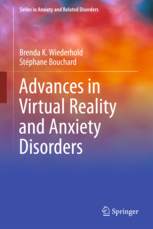By Irene Cruz
It always sounded like science fiction — technology that could make you feel like you’re standing on the edge of a building, walking on a balance beam, or sailing in the middle of the ocean.
But now, virtual reality technology has advanced to the point where that dream…has become a reality.
Virtual Reality headsets were one of the big-ticket items landing under Christmas trees last year, with many consumers ready to step into the 3-D gaming world. And as popular as those trendy pieces were, the entertainment industry isn’t the only place VR is striking it big in 2017.
Experts predict you’ll see more headsets in the classroom, in doctors offices treating phobias and Post Traumatic Stress Disorder [PTSD], in the workplace, and on the internet bringing you to the latest news scene. Virtual Reality has been around for about three decades, but past issues — technology was too expensive, the equipment was clunky, people got motion sickness, the software wasn’t realistic — held the product back from popularity on the market.
“In the last two or three years, there has been a real frenzy about the equipment,” Dr. Skip Rizzo, a professor for USC’s Institute for Creative Technologies, said. “Pretty soon, a virtual reality headset is going to be like a toaster. Everyone is going to have one. You may not use it every day, but every home will have one.”
The education field is looking into the technology as well, possibly for surgical training, combat training, and special needs classes.
“Autistic children sometimes take better to virtual reality – to computers – than they do to humans,” Dr. Brenda Wiederhold, president of Virtual Medical Center in San Diego, said. “We can train autistic children how to cross streets, how to order at a restaurant, how to behave more social appropriately.”
For full article, click here.



